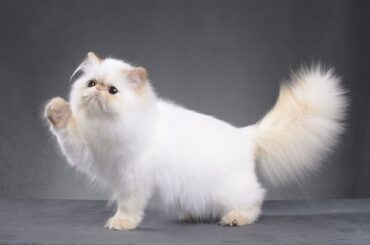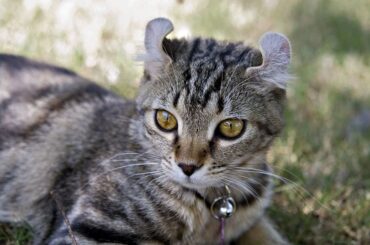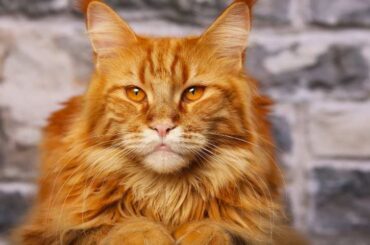The Russian Blue Cat, also known as the Russian Blue, is a naturally occurring breed that is thought to have originated in the Russian port of Arkhangelsk. Archangel Blues is another name for them. In the 1860s, sailors are thought to have transported them from the Archangel Isles to Great Britain and Northern Europe. In 1862, the first mention of an Archangel Cat occurs in a British publication.
The Archangel Cat made its debut appearance in a show in 1872 at The Crystal Palace in London, England. The Russian Blue is unrelated to the other three solid blue shorthaired breeds: Thailand’s Korat, France’s Chartreux, and Britain’s British Blue, now known as the British Shorthair.
The inaugural cat show, held at the Crystal Palace in London in 1871, featured a Russian Blue named Archangel Cat. Russian Blues were shorthaired, solid blue felines with unusual body shapes at the time. The original coat was thick, dense, glossy, and light silver-blue in hue, according to pictures and written materials from the time. Despite clear distinctions in kind, Russian Blues competed in the same class as all other shorthaired blues.
Due to a scarcity of Russian Blues after the war, they were crossed with Siamese. Despite the fact that Russian Blues were present in the United States before the war, it was not until after the war that American breeders developed the contemporary Russian Blue.
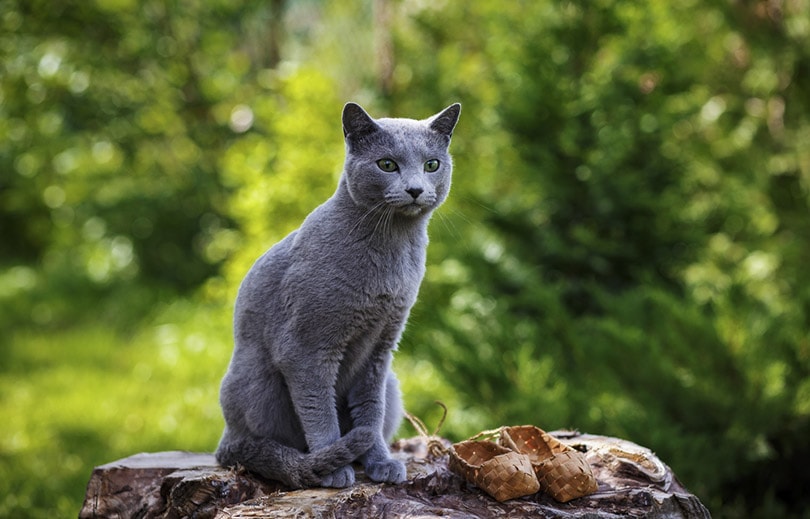
The Russian Blue was recognized by the Governing Council of the Cat Fancy (GCCF) in 1912 and was given its own class. The breed progressed until World War II, when it, like many other breeds, was on the verge of extinction. The Russian Blue arrived in the United States in the early 1900s, but serious breeding and promotion efforts did not begin until 1947.
Cat fanciers in Australia, South Africa, and now the United Kingdom had accepted the Russian White and Russian Black colors as Russian cats by the late 1970s (in different classes). The Cat Fanciers’ Association and the FIFe, on the other hand, do not recognize any Russian Blue variation.
Table of Contents
Body Characteristics
The body is well boned, long, strong, and muscular; the head is smooth, medium wedge, neither long nor short and huge. Without an excessive pinch or whisker break, the muzzle is blunt and becomes part of the overall wedge. Long and flat in profile, the top of the skull softly descends to just above the eyes, then continues at a slight downward angle in a straight line to the tip of the nose.

The eyes are positioned wide apart and rounded in shape, with brilliant green color. Russian blues are medium-sized cats with dense, short coats that stand out from their bodies and give them the appearance of being larger than they are. Their velvety, silky coats are a dark charcoal gray with a subtle, shimmering silver tip.
The eyes of Russian blue change color from yellow to green over time, which is one of the most fascinating features of her appearance. Russian blue kittens are born with blue eyes, as are all kittens. Around four months old, the blue fades to a pale yellow or golden color, then turns yellow with a green ring, and finally turns entirely bright green in adulthood. These cats are about 7–12 pounds and stand about 10 inches tall.
Behavior
The Russian Blue is an intriguing and peaceful creature. They are known for their friendliness and intelligence, as well as their reserved demeanor. They are noted for playing fetch and opening doors, as well as being sensitive to human emotions. They like playing with a variety of toys and form strong ties with their family members and other pets. Although they are generally thought of as a quiet breed, there are always outliers. Unless they were raised in an active environment, they are usually reserved among strangers.
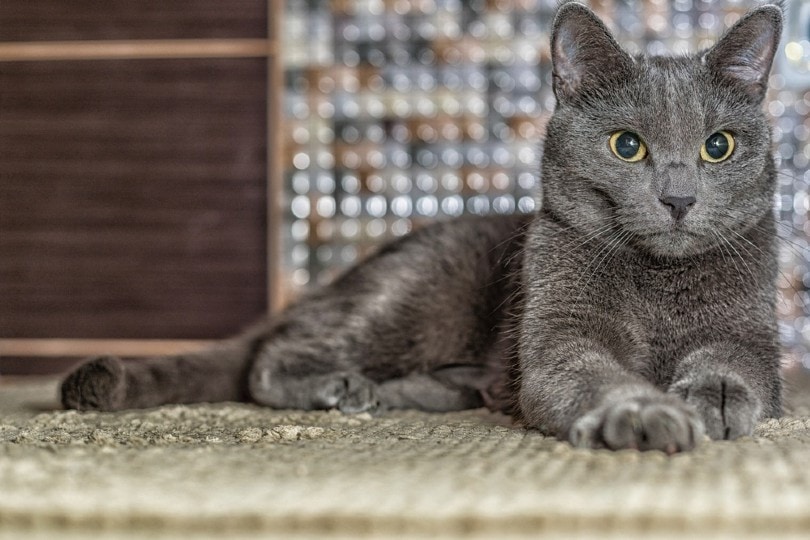
Training
This breed requires both physical and mental activity due to its intelligence. They’ll welcome having so many toys to help them burn off all that physical and mental energy. Russian Blues are also extremely intelligent creatures. They have a remarkable memory and will learn where their favorite toys are hidden and will take their owners there when they want to play.
Caring
These pets, unlike most cats, do not require any particular exercise; they will burn off a lot of energy just playing and running about the house. The Russian blue’s grooming requirements are quite low-maintenance. To get rid of loose hairs and keep shedding to a minimum, these cats simply need a few washes and weekly brushing. Nail trimming, eye, and ear cleaning should all be done on a regular basis.
Health
These cats are generally healthy animals with few health concerns due to the fact that they have few hereditary disorders and are not prone to disease. The lifespan of Russian blues is 15–20 years.
RECOMMENDED ARTICLES
- Ragdoll Cat Breed – 6 Comprehensive Body Description, Behaviour And Health
- Ragamuffin Cat Breed – 5 Comprehensive Body Characteristics, Behaviour And Health
- Top 8 Effective Symptoms of Hematuria in Cats – Causes And Treatment
- Top 8 Effective Causes of Diarrhea In Cats – Diagnosis And Treatment
If you like, please share it. Sharing is usually caring.

